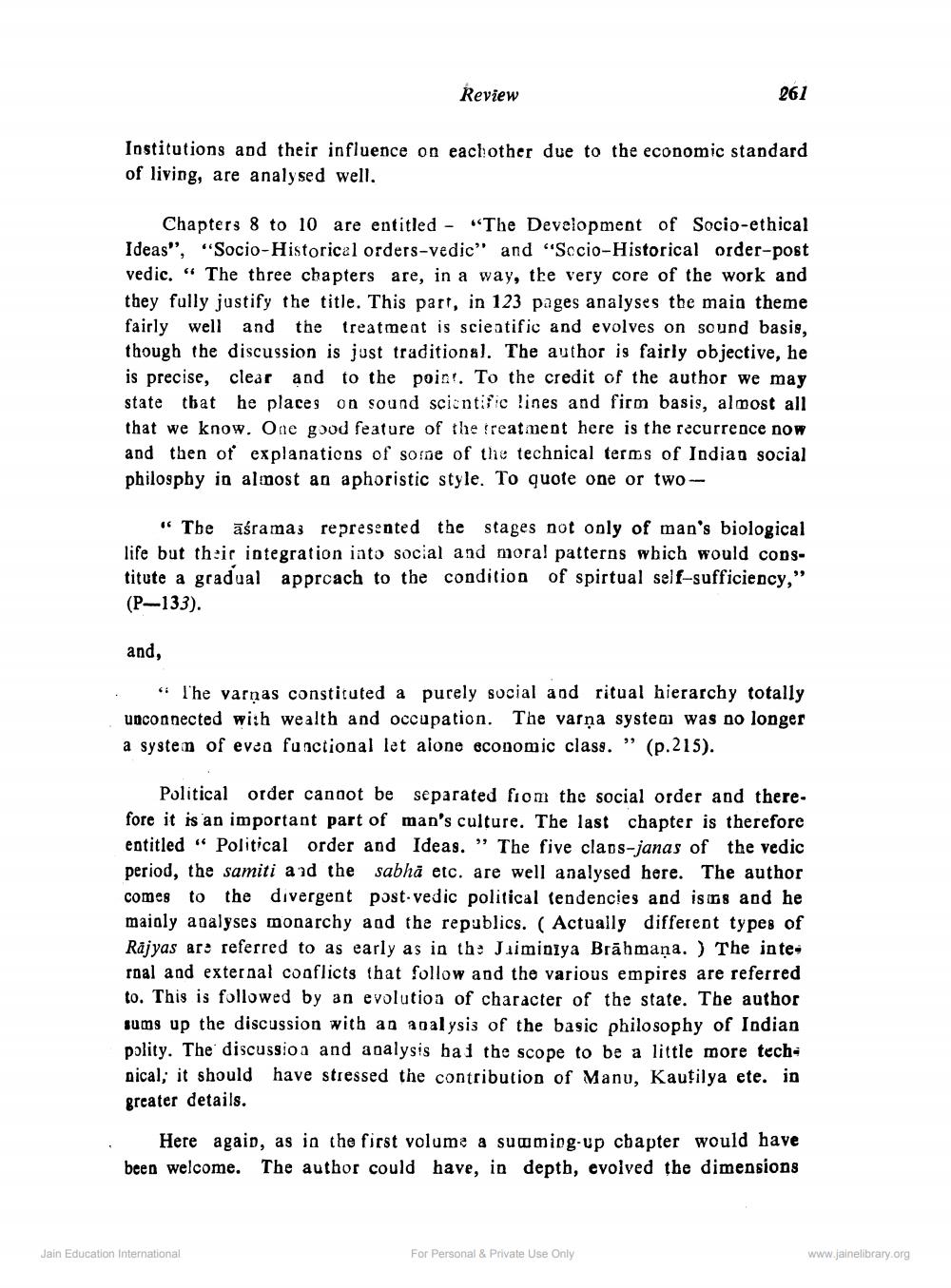________________
Review
Institutions and their influence on eachother due to the economic standard of living, are analysed well.
Chapters 8 to 10 are entitled "The Development of Socio-ethical Ideas", "Socio-Historical orders-vedic" and "Sccio-Historical order-post vedic." The three chapters are, in a way, the very core of the work and they fully justify the title. This part, in 123 pages analyses the main theme fairly well and the treatment is scientific and evolves on sound basis, though the discussion is just traditional. The author is fairly objective, he is precise, clear and to the point. To the credit of the author we may state that he places on sound scientific lines and firm basis, almost all that we know. One good feature of the treatment here is the recurrence now and then of explanations of some of the technical terms of Indian social philosphy in almost an aphoristic style. To quote one or two
and,
261
"The śramas represented the stages not only of man's biological life but their integration into social and moral patterns which would constitute a gradual approach to the condition of spirtual self-sufficiency," (P-133).
"The varnas constituted a purely social and ritual hierarchy totally unconnected with wealth and occupation. The varna system was no longer a system of even functional let alone economic class. (p.215).
Political order cannot be separated from the social order and therefore it is an important part of man's culture. The last chapter is therefore entitled Political order and Ideas." The five clans-janas of the vedic period, the samiti and the sabha etc. are well analysed here. The author comes to the divergent post-vedic political tendencies and isms and he mainly analyses monarchy and the republics. (Actually different types of Rajyas are referred to as early as in the Jaimintya Brāhmaṇa.) The inte rnal and external conflicts that follow and the various empires are referred to. This is followed by an evolution of character of the state. The author sums up the discussion with an analysis of the basic philosophy of Indian polity. The discussion and analysis had the scope to be a little more tech nical; it should have stressed the contribution of Manu, Kautilya ete. in greater details.
Jain Education International
Here again, as in the first volume a summing up chapter would have been welcome. The author could have, in depth, evolved the dimensions
For Personal & Private Use Only
www.jainelibrary.org




